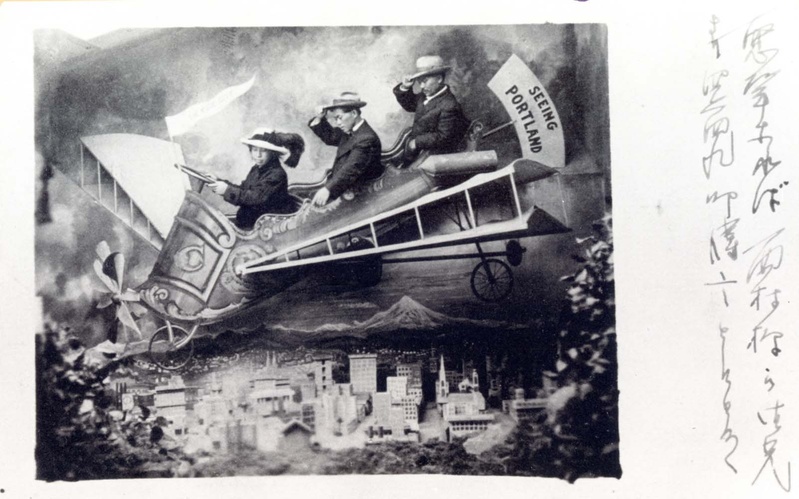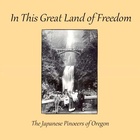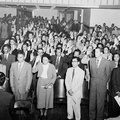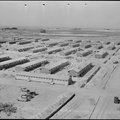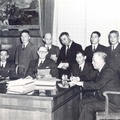The History of the Issei Pioneers in Oregon, 1880 – 1952
Between 1843 and 1860, more than 250,000 pioneers began the journey across the Oregon Trail heading west. In 1859, Oregon became one of the United States and was still a young state with undeveloped forests and virgin farmlands when the Japanese immigrants arrived in the 1880s. Called Issei, the first generation, Japanese immigrants, like all pioneers, struggled to survive in their new environment. Unlike most other immigrants, the Issei were classified as “aliens ineligible to citizenship” under American naturalization laws. They had to combat social and legal discrimination while they worked to create farms, businesses, and communities for themselves and their children. Until today, the history of this courageous racial minority has been largely ignored.1 Using primarily Japanese-language sources, this essay uncovers some of the forgotten history of the Oregon Issei and narrates their experiences as “aliens ineligible to citizenship” from 1880 to 1952.
The Issei Arrive in Oregon
Huge dreams of fortune
Go with me to foreign lands
Across the oceanRizan2
America beckoned to the adventurous and the industrious, first from Europe and then from all parts of the world. While European nations were claiming worldwide colonies, America’s Commodore Perry sailed into Tokyo Bay in 1853 ending two centuries of isolation. Perry’s intrusion hastened the overthrow of the decaying feudal system and ushered in the Meiji Restoration of 1868.
Japan’s new leaders embarked on a path of modernization transforming Japan into an international power. The small farmers bore much of the cost of change, which was accompanied by drought, famine, and overpopulation. In the face of overwhelming pressures, the Japanese government finally allowed its citizens to work overseas.
The first known Japanese immigrants to Oregon, Miyo Iwakoshi and her family, arrived in Oregon in 1880. Miyo’s husband, Andrew McKinnon, was a Scot whom she had met when he worked as a professor of animal husbandry in northern Japan. They were accompanied to Oregon by Miyo’s younger brother, Riki, and her adopted daughter, Tama Jewel Nitobe. The family settled near Gresham and established a sawmill which McKinnon named “Orient” in honor of his wife.3
Five years later, in 1885, Shintaro Takaki came to Portland to sell Japanese goods to Chinese merchants. By 1889, he had accumulated enough money to start a restaurant. Two years later, he married Tama Jewel Nitobe, starting the first Japanese immigrant family in Oregon.
In 1891, a group of recently arrived Japanese gathered at Takaki’s restaurant. They had discovered that the railroad jobs they had been promised were nonexistent. Generously, Takaki fed them on credit and found them work on farms and railroads.4
In a letter to a friend, Takaki explained:
In 1891, the first group of seven immigrants, all from Okayama Prefecture, came directly to Portland under the contract that they pay back the travel expenses by working, followed by another group of thirteen from Wakayama Prefecture. Yet, they had great difficulty finding a job. It was not until that fall that they could remit $20 per person to Japan which they earned at the hop farm in Sherwood. These 20 people were then taken by a man named Tadashichi Tanaka to Nampa, Idaho, to work on [a] railroad under a Chinese contractor.5
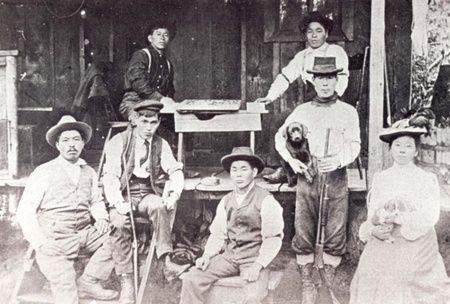
Tanaka, who would become the most influential labor contractor in the 1890s, asked Takaki for more Japanese laborers to work on the Oregon Short Line, a subsidiary of the Union Pacific.6 Takaki provided the workers and became the first Japanese labor contractor in Oregon.
By the turn of the century, the railroads had become a major source of employment for Japanese immigrants in Oregon. The labor shortage caused by the Chinese Exclusion Act in 1882 created a seller’s market. In the 1890s, Japanese section hands earned $1.00 to $1.10 a day, while farm laborers received 40 cents to 50 cents. The number of Japanese railroad workers increased quickly from 600 in 1896 to 1,221 by 1906. Between 1905 and 1907, the Japanese comprised about 40 percent of the total railroad labor force in Oregon.7
Acting as middlemen between railroads and immigrants, labor contractors not only facilitated Japanese employment on the railroads but also made a large profit for themselves. Though the contractors received no compensation from railroad companies, each laborer paid a monthly total of $4.00 to his contractor. Each laborer was charged $1.00 a month as a ‘translation fee”, five cents a day of medical insurance and five cents daily commission. A Japanese railroad worker earned about $1.40 a day, or $35.00 a month in 1909, so more than ten percent of his entire income went to a labor contractor. Labor contractors also profited by selling their laborers daily necessities. Isolated in rural areas, Japanese laborers had no choice but to buy the over-priced goods provided by labor contractors. Many labor contractors used these profits to expand their businesses to larger ventures.8
Shinzaburo Ban was the most influential labor contractor in Oregon. Born in Tokyo in 1854, he was a son of a prominent samurai family and studied English under an American professor. After graduating from school, Ban started his diplomatic career, serving as a secretary to the Japanese Consul General in Honolulu. There, he realized that labor contracting in the continental United States would lead to business opportunities. He resigned from the Japanese Foreign Ministry, set up an emigration company in Kobe and came to Portland in 1891.
Taking over the connections of Shintaro Takaki, Ban started out as a subcontractor as an American businessman, and in 1893, he established his own company known as S. Ban & Company. At one point, Ban had contracts to supply Japanese laborers to six railroad companies whose jurisdictions ranged from the West Coast to Nebraska and to North and South Dakota.9 Concurrent with the massive influx of new Japanese immigrants from Hawaii and Japan in the early 1900s, his business prospered to the extent that he supplied 3,800 laborers annually for railroads and farms and earned five millon dollars a year.
Also, he ran a large mercantile shop in Portland with branches in Denver, Colorado, and Sheridan, Wyoming, two mills in Quincy and Linden, Oregon, and a cattle ranch and a sugar beet farm.10 S. Ban & Company was the biggest Japanese business in Oregon until its bankruptcy in 1924.
Because of the presence of Japanese labor contracting, Portland become a major center for the distribution of Japanese railroad workers in the Pacific Northwest. Workers were also sent to the salmon canneries and sawmills of Oregon, Washington and Alaska. In 1909, Oregon’s sawmills had some 200 Japanese workers. During the ensuing decade, many Japanese entered the expanding lumber industry, which offered more stable employment than railroad and cannery work. In the meantime, as the Chinese rapidly decreased in number, more and more Japanese worked in the canneries. In the summer of 1909, for example, five hundred Japanese were sent from Portland to work in canneries. Many lumber and cannery workers were in Clatsop County, northwest of Portland. As late as 1920, there were 450 Japanese in the county, most of whom, were laborers in the above two industries.11
In order to serve the needs of immigrant laborers, many ethnic businesses appeared in the Portland Japanese community. In general, Japanese businessmen were former laborers who successfully accumulated capital. During the first decade of this century, a number of businesses grew quickly along with the influx of Japanese immigrants into Oregon. By 1909, there were a total of 97 Japanese businesses, which included 14 western-style restaurants, 13 bath houses, 12 hotels and boarding houses, 11 Japanese restaurants, 10 barber shops, and 8 grocery stores.12 Meanwhile, the Portland Japanese population also jumped from 20 in 1890 to 1,189 in 1900, and to 1,461 in 1910.13

Notes:
1. To date, there are a few existing studies of the Oregon Issei: Marvin G. Pursinger, “Oregon’s Japanese in World War II, A History of Compulsory Relocation,” Ph.D. Dissertation, University of Southern California, 1961; and “The Japanese Settle in Oregon: 1880-1920,” Journal of the West 5:2 (April, 1966): 251-263; Marjorie R. Stearns, “The History of the People in Oregon,” MA Thesis, University of Oregon, 1938; “The Settlement of the Japanese in Oregon,” Oregon Historical Quarterly 39:3 (September, 1938: 262-269; AND Barbara Yasui, “The Nikei in Oregon, 1834-1940,” Oregon Historical Quarterly 76:3 (September, 1975): 225-257. With an exception of Barbara Yasui, these authors rely almost exclusively on the English sources recorded by white Americans. As a result, they focus on anti-Japanese exclusionists rather than on Japanese immigrants.
2. Kazuo Ito, Issei: A History of Japanese Immigrants in NorthAmerica translated by Shinichiro Nakamura and Jean S. Gerard, (Seattle: Japanese Community Service, 1973) p. 29.
3. Zaibei Nihonjinkai, Zaibei Nihonjinshu (San Francisco: Zaibei Ninonjinkai, 1940) pp. 999-1000; Barbara Yasui, “The Nikkei in Oregon, 1834-1940,” p. 228; and Marvin G. Pursinger, “The Japanese Settle in Oregon: 1880-1920,” p. 251-252.
4. Gaimusho, Nihon Gaiko Bunsho, Vol. 24 (Tokyo: Gaimusho, 1952), pp. 495-498; and Frank M. Tomori, Taigan no Koe (Okayama: Tomori Yauro, 1969), p. 60.
5. Shiro Fujioka, Ayumi no Ato (Los Amgeles: Ayumi no Ato Kanko Koenkai, 1957), p. 352.
6. Ibid., p. 349. For more details of Tadashichi Tanaka, consult Yuji Ichioka, The Issei: The World of the First Generation Japanese Immigrants, 1885-1924 (New York: Free Press, 1988), pp. 49-50.
7. Gaimusho, Imin Chosa Hikoku, Vol. 9 (Tokyo: Yushodo, 1986), pp. 40, 78.
8. Ibid., pp. 41-41; and Kazuo Ito. Issei: A History of Japanese Immigrants in North America, p. 313. Tally made by the author.
9. Ban contracted with the Southern Pacific, the Oregon Railway Short Line, the Oregon Railway and Navigation Company, the Astoria and Columbia River Railway, the Chicago, Burlington and Quincy, and the Santa Fe Railroad.
10. Ofu Inshi, Zaibei Seiko no Nihonjin (Tokyo: Hobunkan, 1904), pp. 136-156; Jushiro Kato, Zaibei Doho Hattenshi (Tokyo: Chuodo Shobo, 1914), pp. 123-124; Ikkai Kashiwamura, Hokubei Tosa Tajan (Tokyo: Ryubundo, 1911), pp. 226, 232-237.
11. Gaimusho, Nihon Gaiko Bunsho, Vol. 24, p. 498.
12. Gaimusho, Imin Chosa Hokoku, Vol. 9. Pp. 116-117.
13. U.S. Department of the Interior, Census Office, Compendium of the Eleventh Census of the U.S. 1890; Census Reports of the Twelfth Census of the U.S.: 1910 (Washington D.C.: Government Printing Office, 1892, 1902, and 1913).
* This article was originally published in In This Great Land of Freedom: The Japanese Pioneers of Oregon (1993).
© 1993 Japanese American National Museum


